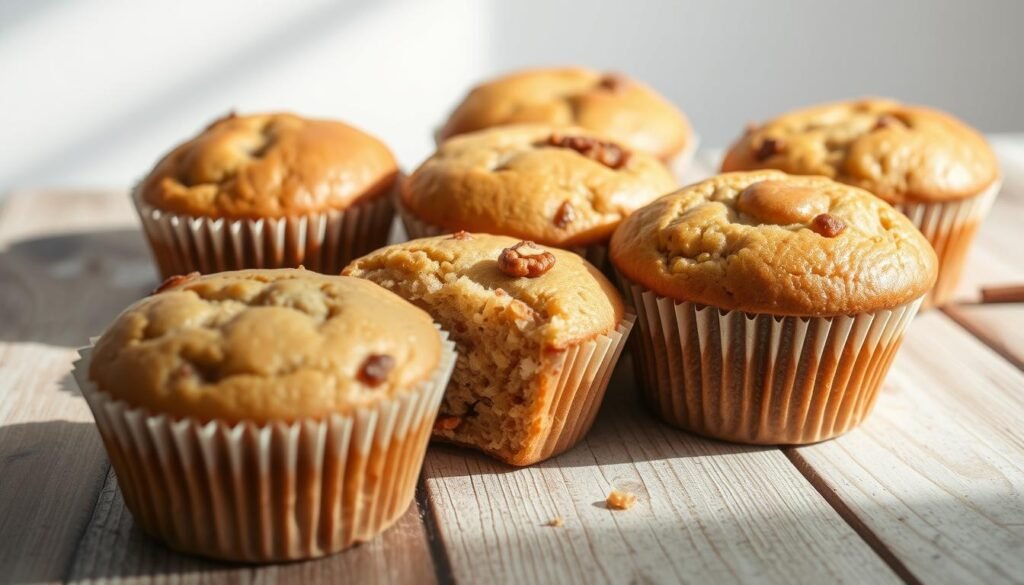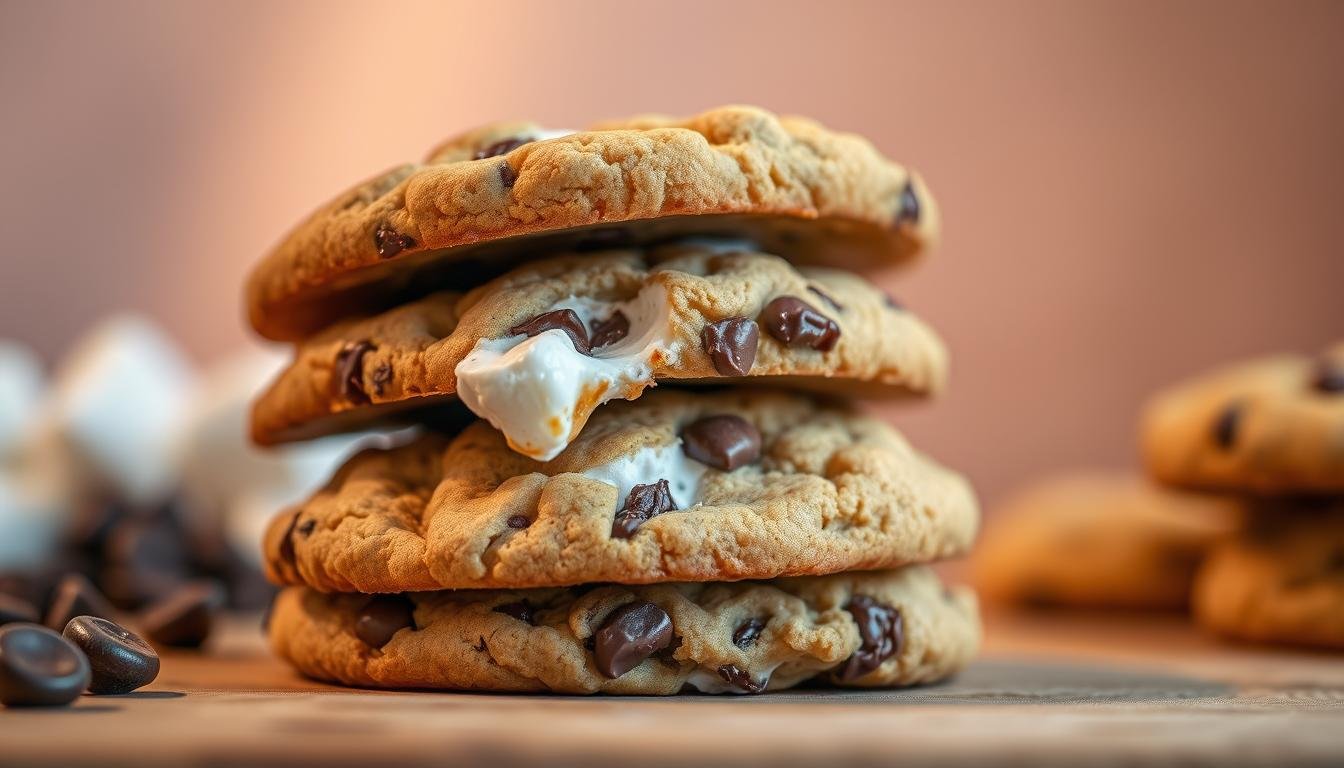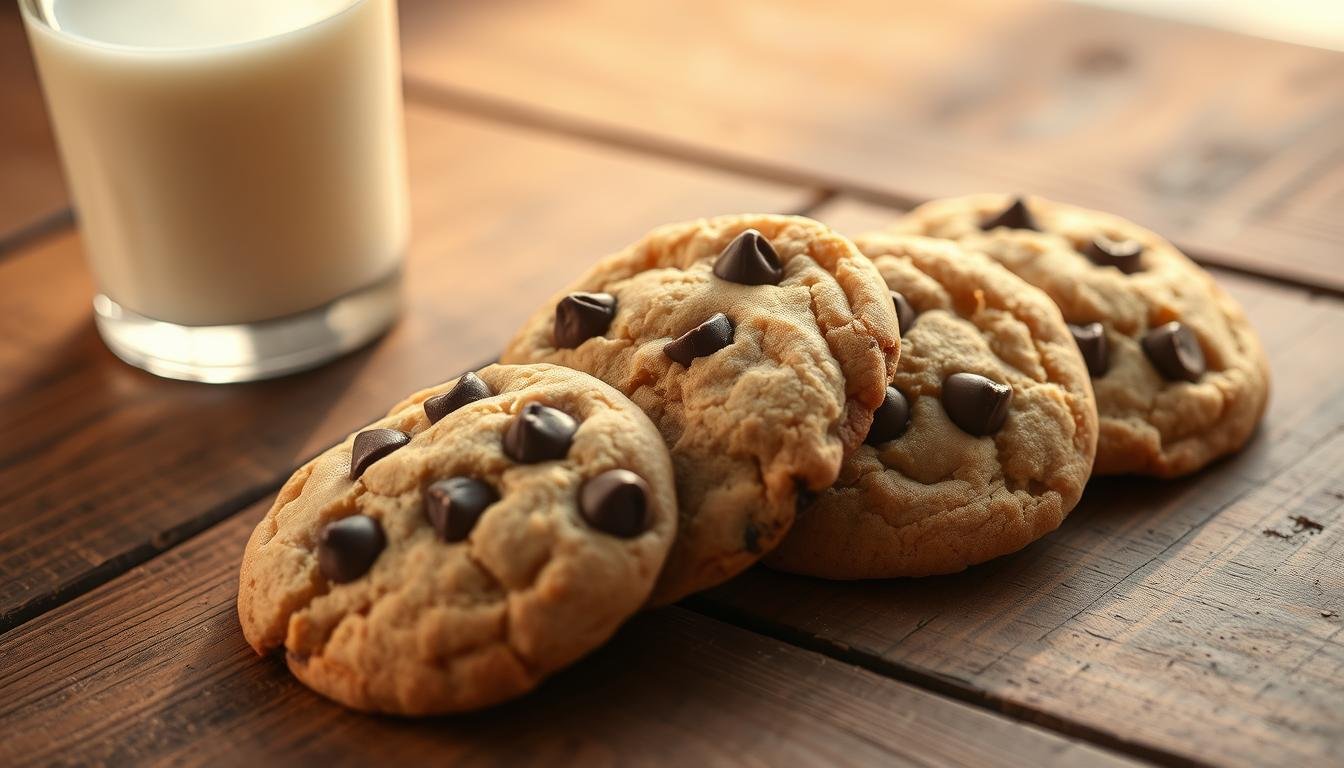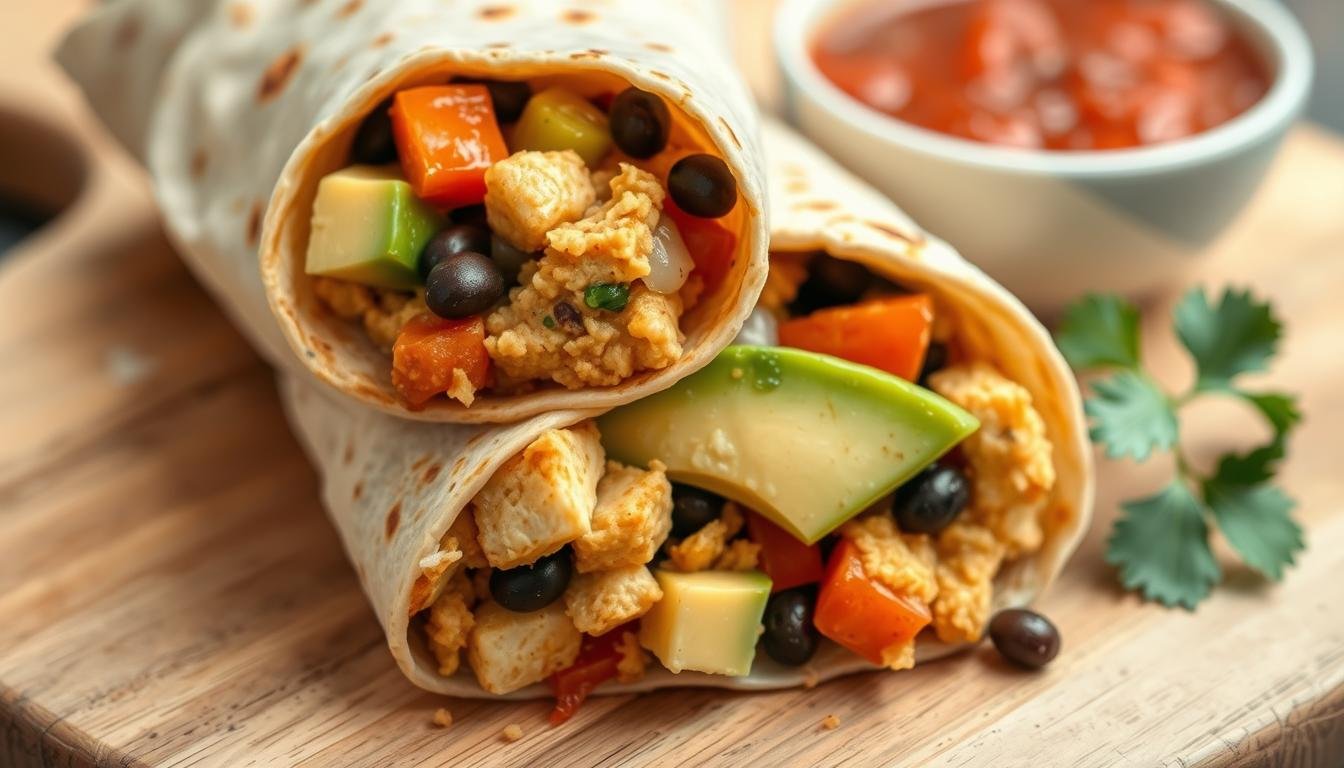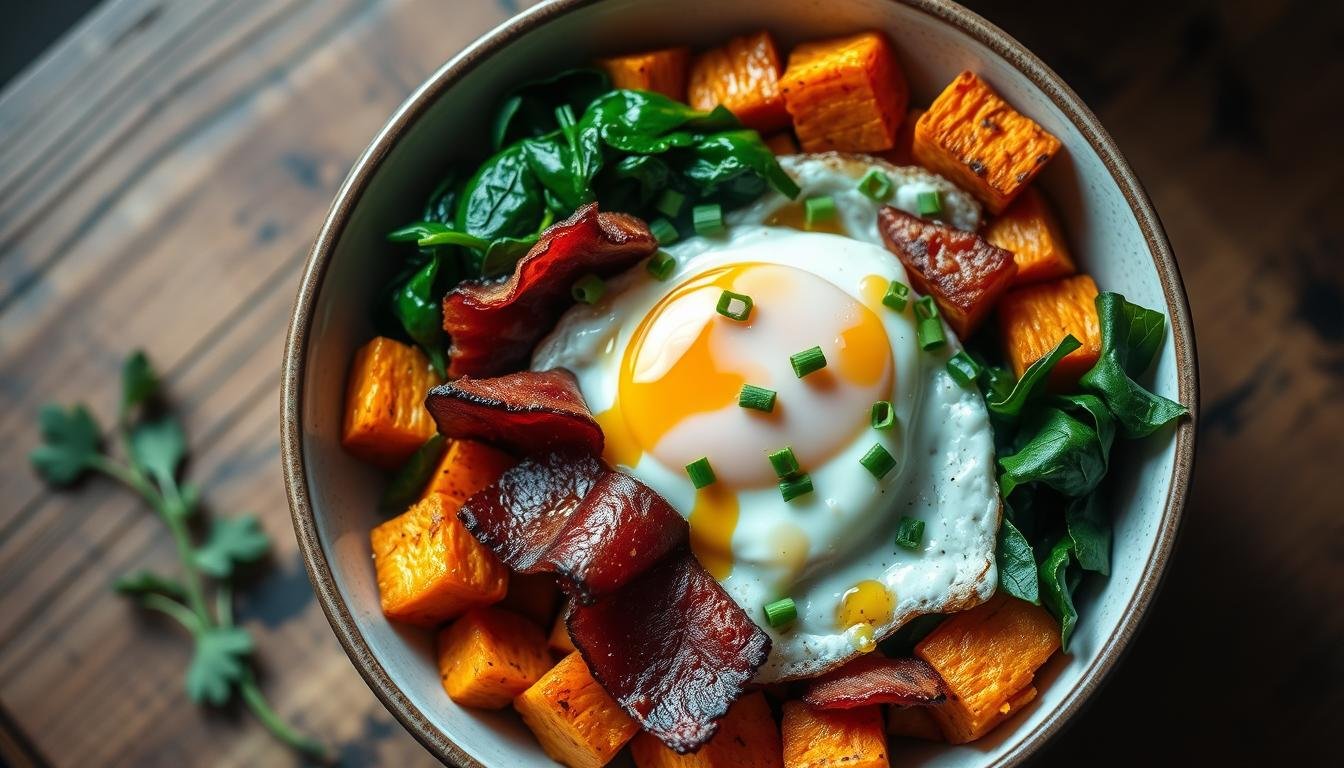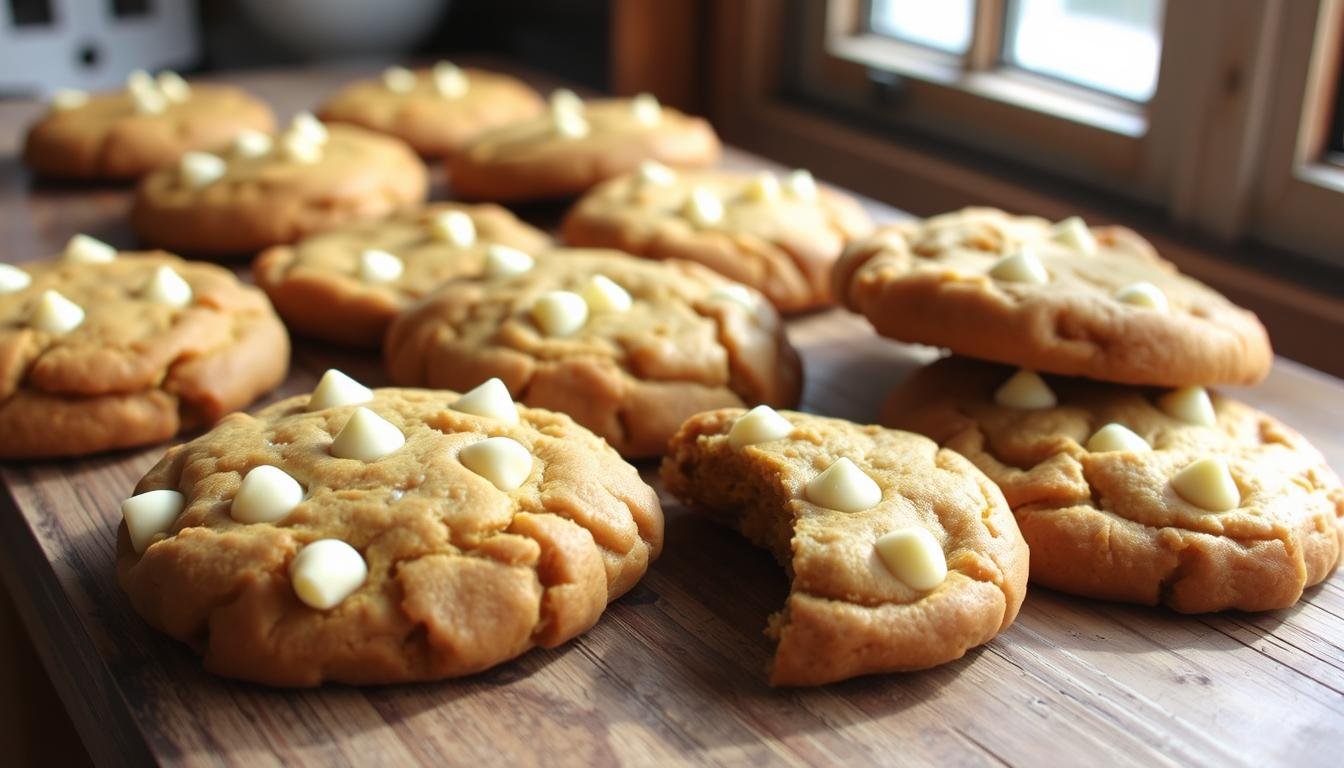Banana bread muffins are my favorite healthy breakfast. They mix ripe bananas, simple ingredients, and quick prep. Gluten-free versions are just as good as regular ones, thanks to the right flour.
I choose Bob’s Red Mill Gluten Free 1-to-1 Baking Flour or King Arthur Measure for Measure Gluten Free Flour. These flours make the muffins moist and fluffy.
I make these muffins healthier by using less sugar (about 1/4 cup brown sugar). I also swap dairy for avocado oil or olive oil. And sometimes, I use flax eggs instead.
These recipes are great for busy mornings. They’re easy to make in about 30 minutes. They also keep well at room temperature, in the fridge, or in the freezer.
Try all 10 gluten-free banana bread breakfast muffins. Find your favorite mix of flavor, texture, and dietary swaps.
Key Notes;
- Use overripe bananas for natural sweetness and moist crumb.
- Bob’s Red Mill and King Arthur gluten-free blends give reliable results.
- Lower-sugar options and dairy-free swaps keep muffins healthy.
- One-bowl methods make these homemade muffins fast for busy mornings.
- Store at room temp up to 5 days, refrigerate up to 10 days, or freeze up to 3 months.
Why I Love Gluten-Free Banana Bread Breakfast Muffins
I make these muffins when my bananas get too ripe. They add sweetness and moisture. I mix mashed bananas with baking soda for a light texture.
My family loves them for lunch or after-school snacks. A dietitian friend likes the less sugar and whole grains. They’re great for kids and those with dietary needs.
Making them takes just 30 minutes. I can freeze them for quick mornings. They’re perfect for breakfast or a snack on the go.
Using whole-grain flours and maple syrup makes them healthier. They taste good and are easy to make. These muffins are a great way to start the day or a quick snack.
Essential ingredients for moist gluten-free banana muffins
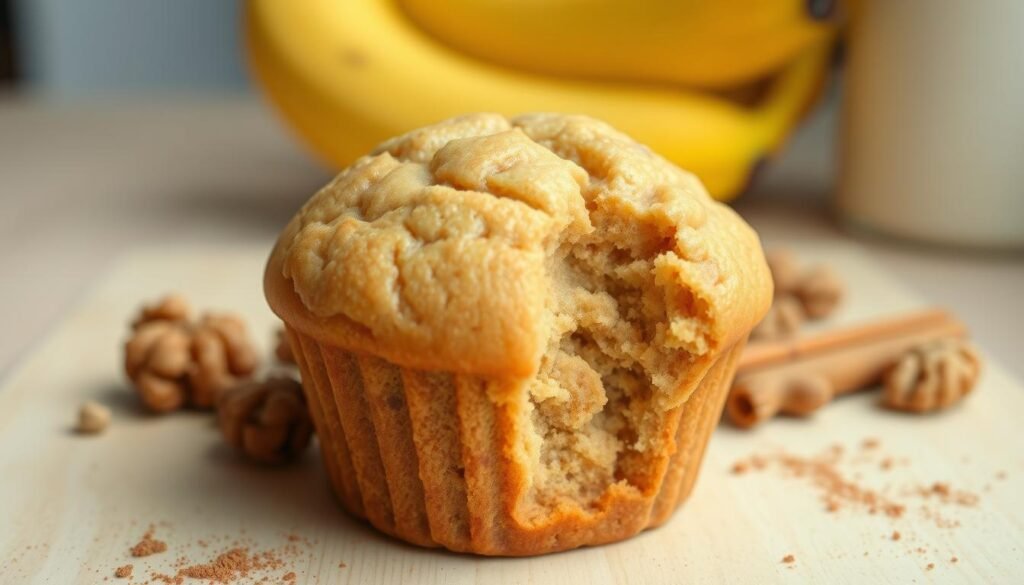
I know a few key ingredients make muffins moist and tender. The right gluten-free flour blend, ripe bananas, and a good binder are key. Adding the right fat and sweetener makes the muffins perfect for breakfast or lunch.
Best blends I rely on and why they work
I choose Bob’s Red Mill Gluten Free 1-to-1 Baking Flour and King Arthur Measure for Measure Gluten Free Flour. They are great for swapping with all-purpose flour. They give a tender crumb and consistent texture.
Pillsbury gluten-free flour is also good. It’s a rice-based mix that includes xanthan gum and starches. But, I avoid adding extra xanthan gum to avoid a gummy texture. Always measure carefully to avoid dense muffins.
How ripe bananas, eggs, and fat shape texture
Ripe bananas add sweetness and moisture. I mash them and let baking soda react for a minute. Then, I fold in the dry ingredients.
Eggs help with structure and lift. For egg-free versions, I mix ground flax with water and add nondairy milk. Sometimes, I use Bob’s Red Mill gluten-free egg replacer for vegan tests.
I use melted butter for flavor or neutral oils like grapeseed or avocado oil for a lighter taste. Coconut oil adds a coconut hint. For less fat, I use unsweetened applesauce.
Sweetener choices that complement banana flavor
I use 1/4 cup brown sugar for sweetness. Coconut sugar adds caramel notes. Maple syrup or honey make the muffins moist and sweet naturally.
To cut sugar, I reduce granulated sugar and use more ripe bananas. I also mix maple syrup with coconut sugar. These changes keep the muffins moist and less sweet.
| Ingredient | Why I use it | Tip |
|---|---|---|
| Bob’s Red Mill GF 1-to-1 | Tender crumb, cup-for-cup AP swap | Measure by spoon-and-level; adds consistent results |
| King Arthur Measure for Measure | Reliable texture, includes starches for structure | Avoid extra xanthan gum when using this blend |
| Pillsbury gluten-free flour | Rice-based cup-for-cup mix with xanthan gum | Do not double xanthan; reduce if recipe adds it |
| Ripe bananas | Natural sweetness, moisture, reacts with baking soda | Let mashed bananas sit 1–2 minutes with baking soda |
| Eggs / Flax eggs | Structure and lift; flax eggs for vegan versions | Flax ratio: 2 tbsp ground flax + 6 tbsp water = 2 eggs |
| Butter / Neutral oil | Richness and tender crumb | Swap half with applesauce to reduce fat |
| Brown sugar / Maple / Coconut sugar | Complement banana flavor and add moisture | Use 1/4 cup brown sugar as starting point; adjust to taste |
| Add-ins (chocolate, nuts, oats) | Flavor, texture, nutrition | Enjoy Life chips for dairy-free option; fold gently |
Easy gluten-free muffin recipe template I use
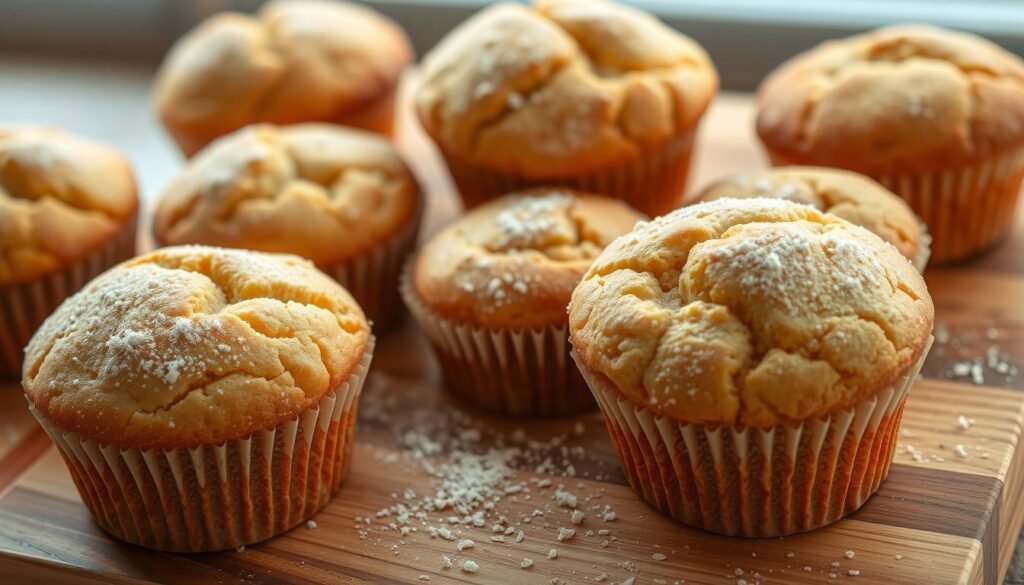
I have a simple template for making homemade muffins. It makes gluten-free baking easy. First, whisk together a cup-for-cup gluten-free flour blend, brown sugar, baking soda, and a pinch of salt.
In another bowl, mash ripe bananas until they’re smooth. Then, mix in eggs or a flax egg, oil, and vanilla.
Step-by-step mixing method for a tender crumb
Next, add the wet ingredients to the dry mix. Fold until just moistened. Don’t overmix, as it makes muffins dense.
If you want chocolate chips or nuts, gently fold them in at the end.
Baking times, temperatures, and pan tips for consistent results
Use an ice cream scoop to portion the batter. This ensures even baking. For standard muffins, bake at 375°F for 13–16 minutes with lighter blends.
For darker blends, bake at 350°F for 15–20 minutes. Use silicone pans or paper liners for easy release.
For whole-grain or oat-enriched batters, lower the oven to 325°F. Add 5–10 minutes to avoid a burnt top.
How to convert the batter to a loaf (banana bread) when desired
To make banana bread muffins or a full loaf, pour the batter into a greased 9×5-inch pan. Bake at 375°F. Start checking at 35 minutes and bake for 45–55 minutes, depending on add-ins and flour.
For easy gluten-free baking, cool baked goods on a rack before storing. This prevents moisture and keeps muffins tender for days.
Variations: quick gluten-free banana muffins and bakery-style options
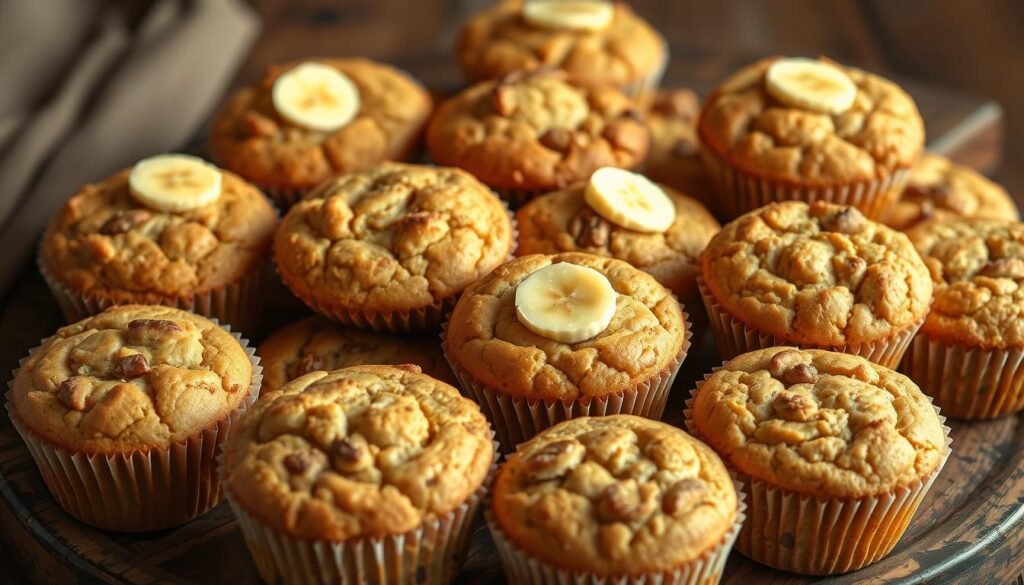
I keep a few go-to recipes ready for quick mornings. These recipes turn one batter into breakfast muffins, bakery-style treats, or snacks for school. They use common ingredients and are easy for anyone to make.
For fast baking, I use a one-bowl method. I mash bananas, whisk eggs and butter, mix in gluten-free flour, and add extras. Scoop the mix into pans for a quick bake. Kids love helping with this, making it fun and fast.
For bakery-style muffins, I fill cups to the top and chill the mix if it’s too runny. A sprinkle of sugar on top and even scoops make them look great. Baking at 350°F for 15–20 minutes makes them golden.
Adding different ingredients changes the taste and texture. I use up to 3/4 cup of mix-ins like nuts, berries, or chocolate chips. A little cinnamon or ginger adds flavor. Oats or sugar on top add crunch.
For healthier snacks, I use oats and maple syrup. This mix needs a bit more liquid and careful mixing. These snacks are great for lunches or picnics.
| Variation | Key Steps | Best Add-ins | Typical Bake Time |
|---|---|---|---|
| Quick one-bowl | Mash bananas, whisk eggs + melted butter, fold in flour, scoop | Chocolate chips, walnuts, banana slices | 15–20 minutes |
| Bakery-style domes | Fill cups to top, use ice cream scoop, sprinkle sugar, bake hot | Turbinado sugar, large chocolate chips, oat flakes | 18–22 minutes |
| Whole-grain maple | Replace part of flour with certified oats, add maple, extra liquid | Dried cranberries, pecans, cinnamon | 20–25 minutes |
| Dairy-free & allergy-friendly | Use dairy-free butter or oil and Enjoy Life chips | Seed mixes, dried fruit, chopped apples | 16–22 minutes |
Gluten-free banana muffins with oats and whole-grain options
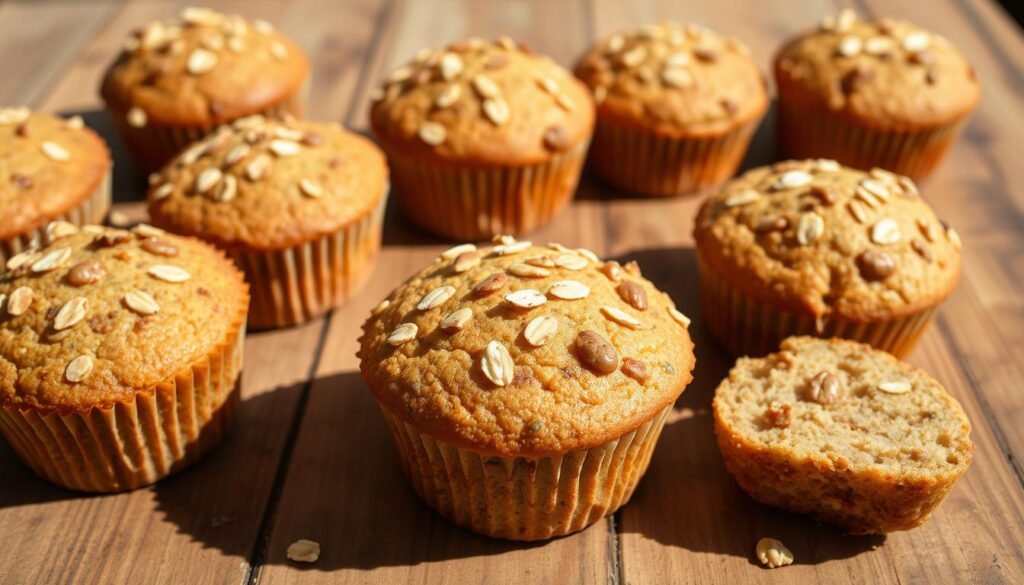
I add oats or whole-grain flours for a heartier texture and more nutrition. These small changes make the muffins tender and flavorful. They’re perfect for morning snacks or lunchbox treats.
Using certified gluten-free oats
I always choose certified gluten-free oats to avoid cross-contamination. Bob’s Red Mill certified gluten-free oats are my go-to. They add chew and help the muffins stay moist with chocolate chips or walnuts. Sprinkling oats on top before baking gives them a bakery look.
Adjusting liquid and binders
Adding 1/3 cup oats makes the muffins denser. I add one to two tablespoons more liquid to balance it. Milk, yogurt, or oil works well. Keeping the binders the same—two eggs or two flax eggs—keeps them moist and prevents crumbling.
Whole-grain and natural sweeteners
I use white whole wheat or gluten-free all-purpose blends like Bob’s Red Mill. Adding oats gives them texture. I prefer maple syrup or honey for natural sweetness. A tablespoon or two of maple syrup adds a wholesome flavor without making the batter too wet.
Quick practical swaps
- If you want lighter muffins, sift the oat flour or pulse oats briefly in a food processor before adding.
- To keep them healthy gluten-free banana bread muffins, cut brown sugar by a quarter and add a splash of maple for depth.
- For breakfast meal ideas, pair a muffin with Greek yogurt and fruit for a balanced plate.
I test small batches to get the moisture and rise just right. These tweaks help me serve consistent, healthy gluten-free banana bread muffins. They’re great for busy mornings and meal prep.
Almond flour and grain-free banana muffins I recommend
I often suggest almond flour for soft, moist banana treats. These are great for low-carb or paleo diets. Almond flour banana bread muffins are perfect, not just gluten-free blends.
Almond flour makes muffins soft and slightly sweet. It needs less flour than gluten-free blends. So, I add more egg or binder for the right texture.
For lighter muffins, I use gluten-free blends. Grain-free banana muffins need almond flour recipes. Swapping can make them gummy or flat.
Here are tips for substituting:
- Use 3/4 to 1 cup almond flour for every 1 cup gluten-free blend.
- Add one extra egg for every 1 to 2 cups almond flour.
- Skip or reduce xanthan gum with almond flour.
- Lower oven temperature by 25°F and bake a bit longer.
Almond flour makes muffins tender and moist. They can be denser and need more binder. Always check with a toothpick to avoid underbaked centers.
For easy gluten-free baking, I test small batches. I note egg count and bake time changes. For nut-free options, I use a trusted gluten-free blend.
Dietary alternatives: dairy-free, nut-free, egg-free, and sugar-free swaps
I test swaps to help readers find recipes that fit their needs. My goal is to keep the taste and texture good. I want to make gluten-free breakfast options for more diets.
For dairy-free baking, I use unsweetened plant milks like oat or soy. This is important when nut allergies are a concern. I also use avocado oil, olive oil, or melted coconut oil instead of butter.
Smart Balance and melted coconut oil are great substitutes for richer crumb. Enjoy Life dairy-free chocolate chips work well in high-heat bakes.
Nut-free swaps are key when I avoid almond flour. I use a reliable gluten-free blend and certified nut-free oat milk. Bob’s Red Mill 1-to-1 gluten-free flour or a blend with rice and sorghum replace almond flour.
Pumpkin seeds add crunch safely in nut-free households.
Egg-free options I test often are flax eggs and commercial replacers. My flax egg ratio is 2 tablespoons ground flax mixed with 6 tablespoons water for two eggs. I add a quarter cup nondairy milk with flax eggs to keep the batter moist.
Bob’s Red Mill egg replacer gives predictable lift, though it’s slightly different than real eggs.
When making sugar-free muffins, I choose coconut sugar or pure maple syrup. Use 1/2 cup maple syrup as a substitute for 1 cup granulated sugar, then reduce other liquids slightly. Coconut sugar darkens the crumb and gives a deeper caramel note.
Batter with liquid sweeteners yields a moister crumb. I often cut back on nondairy milk by one to two tablespoons or add an extra tablespoon of flour to balance thickness.
Below is a compact comparison to help choose swaps by goal, showing typical effects on texture and a quick ratio guide.
| Swap Goal | Common Ingredients | Effect on Texture | Quick Ratio or Tip |
|---|---|---|---|
| Dairy-free | Oat milk, soy milk, Smart Balance, coconut oil | Similar richness with dairy-free butter; slight coconut note if used | Replace milk 1:1; use melted coconut oil 1:1 for butter |
| Nut-free | Cup-for-cup GF blend, nut-free oat milk, pumpkin seeds | Comparable crumb when almond flour omitted; may be a touch lighter | Swap almond flour for GF blend by weight for best results |
| Egg-free | Flax eggs, Bob’s Red Mill egg replacer | Modestly denser, slightly less lift than eggs | 2 Tbsp ground flax + 6 Tbsp water = 2 eggs; add 1/4 cup nondairy milk |
| Sugar-free | Maple syrup, coconut sugar | Maple makes a moister crumb; coconut sugar adds caramel flavor | Use 1/2 cup maple syrup for 1 cup sugar and reduce liquids slightly |
Fail-proof gluten-free baking tips I follow
I keep a short list of practical steps for easy gluten-free baking. These tips help when I bake homemade muffins for breakfast or meal prep. They also help with quick gluten-free breakfast options during the week.
Measuring flour the right way
I use the spoon-and-level method for gluten-free flour. Spoon flour into the cup, then level with a knife. This method keeps the texture steady in my homemade muffin recipes.
Mixing just until combined
I stir wet and dry ingredients only until they’re combined. Overmixing makes muffins dense and gummy. A few small lumps are okay and make the muffins lighter.
Fresh leaveners and a simple chemical trick
I test baking soda and powder by dissolving a pinch in warm water. This checks for bubbles. I mix baking soda into the mashed bananas and let it sit for 1–2 minutes. This helps the batter rise better in gluten-free recipes.
Pan, portion, and bake
I prefer silicone muffin pans with liners. I use an ice cream scoop to fill wells 1/2 to 2/3 full. This gives uniform domes and steady bake times. I follow the toothpick test and add a few minutes for oat or whole-grain versions.
Storage, refrigeration, and freezing
I cool muffins completely before storing. At room temperature, they keep up to five days. Refrigerating extends freshness to about ten days. For longer storage, I flash-freeze on a tray, then pack in airtight bags for up to three months. Thaw overnight or warm for 30–60 seconds to revive the texture.
Quick swaps I trust
I use applesauce to cut fat in some batches. The muffins stay moist but the crumb changes slightly. For allergy-friendly options, I swap eggs with flax eggs and adjust binder amounts by feel. These small changes keep my gluten-free breakfast options varied and reliable.
- Use fresh baking soda/powder.
- Spoon-and-level gluten-free flour.
- Mix until just combined.
- Fill silicone wells 1/2–2/3 full.
- Flash-freeze for long-term storage.
BBC-inspired and popular method comparisons
I compare techniques I use with a BBC-inspired approach and common home methods. I show why one path works better in certain kitchens. My notes focus on oven temperature, mix method, and how to get a reliable rise for bakery-style muffins and everyday batches.
I favor a mid-high oven heat of 375°F for muffins when I want a quick rise and a slightly shorter bake time. This setting gives a well-shaped top and tender crumb. I use gentle mixing with silicone pans or a well-greased tin.
For conversion to a loaf, I keep 375°F and extend bake time to about 45–55 minutes. I check with a skewer.
The BBC-inspired method I reference often uses 350°F for 15–20 minutes for muffins. It stresses full cups, a sugar topping for a crust, and a cup-for-cup gluten blend that includes xanthan gum. I use that lower temp when I aim for a more controlled rise and a classic bakery crust on bakery-style muffins.
I test several gluten-free muffin recipe approaches and compare cup-for-cup blends like Bob’s Red Mill and King Arthur with almond flour and grain-free mixes. Blends with xanthan gum mimic gluten stretch; I avoid adding extra gum or muffins can turn gummy. Almond and grain-free versions rely on eggs or flax binders and often yield moister, slightly denser results.
Across methods, the most consistent moist muffins come from a balance of ripe bananas, enough fat — oil or melted butter — and eggs or tested flax replacements. I make sure baking soda gets time to react with mashed bananas. I stop mixing as soon as dry and wet are combined. These steps matter more than one single technique.
When I want domed, bakery-style muffins, I start hot or fill cups fuller. That strategy gives a fast oven spring that lifts the top. For easy gluten-free baking in small batches, I use the 375°F method with gentle folding and silicone cups for even heat. This saves time and produces a tender crumb.
Below is a quick comparison I use to choose a method based on texture goals and ingredients.
| Goal | Typical Temp & Time | Best Mix | Notes |
|---|---|---|---|
| Quick rise, domed tops | 375°F for 12–16 minutes | Gentle fold, cup-for-cup blend with xanthan | Full cups, higher initial heat, good for bakery-style muffins |
| Controlled rise, crusty top | 350°F for 15–20 minutes | Standard creaming or fold, cup-for-cup blend | BBC-inspired finish, sugar topping optional |
| Moist, denser crumb | 350–375°F for 14–18 minutes | Almond or grain-free mix, extra fat | Omit xanthan, use eggs or flax binder, watch bake time |
| Loaf conversion | 375°F for 45–55 minutes | Same batter, looser batter tolerated | Check center with skewer; cover if browning too fast |
My practice blends BBC-inspired gluten-free banana muffins ideas with tested home tips. I make a reliable gluten-free muffin recipe. I vary one variable at a time to see how flour choice, xanthan gum, and oven heat shape the final texture. This method keeps easy gluten-free baking predictable.
Conclusion
Gluten-free banana bread breakfast muffins are great for busy mornings. They’re perfect for lunchboxes or snacks. Using overripe bananas and a reliable flour blend keeps them moist.
They’re easy to make in about 30 minutes. Just measure flour right, mix gently, and use fresh baking powder. These steps make all the difference in gluten-free baking.
For a healthier option, add oats or use whole-grain blends. Try almond flour for grain-free muffins. With the right ingredients and careful steps, you can make delicious muffins for everyone.

